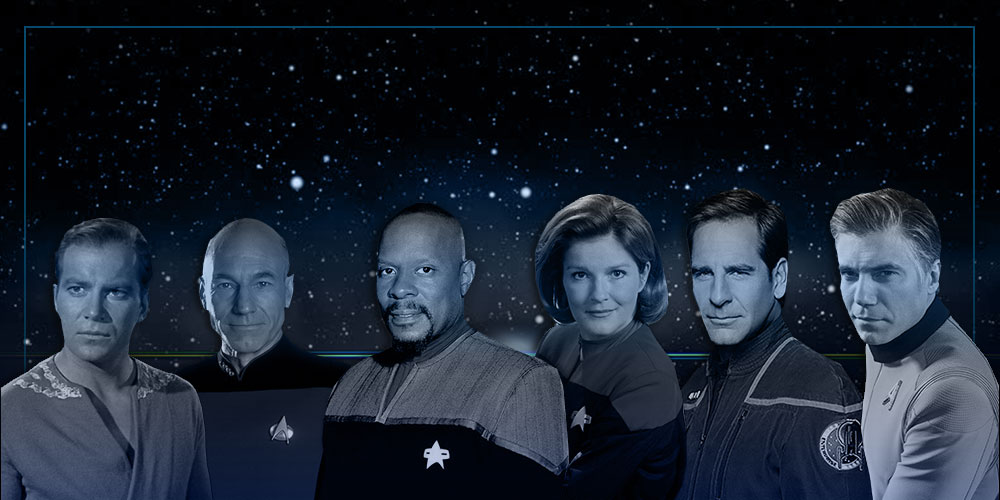I’ve long had a thought regarding the main starship captains depicted in Star Trek it seems they each fit into some basic archetype, whether literary, historical, or cinematic. In this article, I will explain which archetypes I think these characters fit and why. I’m not exactly a scholar so these may not fit into the sorts of character archetypes that may be taught at a collegiate level.
For the purposes of this article, I’m not discussing Michael Burnham as she’s only recently been minted as captain so we’re not sure of her command style as yet, and I won’t discuss Cristobal Rios since we’ve only seen him in eight episodes thus far; with luck, I can add them to the discussion in a year or so.
Without further ado…
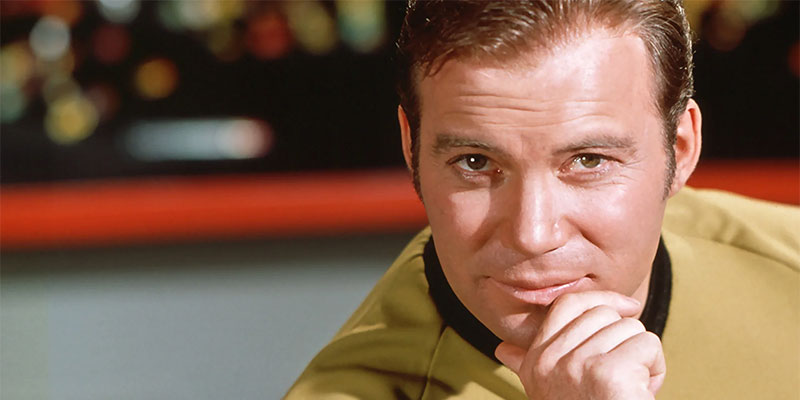
KIRK: THE EXPLORER
The legendary James Tiberius Kirk can be described with so many words, too many to list here in fact, but I feel that as a captain, Kirk embodies the archetypal Explorer. When we first meet him, the brash young captain has relieved the equally legendary Christopher Pike as commanding officer of the U.S.S. Enterprise and is leading his crew on a five-year mission of exploration. That fact alone is evidence of Kirk’s qualities as an explorer; it takes someone truly passionate about discovering the undiscovered to be cut off from family and friends for five years with the distinct possibility of never seeing them or their home again. Through all the trials and tribulations of that mission, Kirk never lost that passion and yearned to head back into space once it ended. He even resorted to somewhat shady means to go back out in “The Motion Picture“, using the V’Ger crisis to strongarm Admiral Nogura into giving him back the Enterprise following its refit, replacing his own hand-picked successor, Willard Decker and accepting a demotion from Rear Admiral in the process.
Canon is uncertain regarding the 14-year time span between that crisis and the Genesis incident, but it is generally assumed Kirk led the Enterprise on another five-year mission of exploration before accepting a second promotion to Admiral and eventual appointment to Starfleet Academy. Even then, he still yearned to head out again. His passion for exploration never once wavered, despite his personal losses of his best friend Captain Spock, and David Marcus, the son with whom he’d reconciled shortly before his death. James Kirk kept going back into space because it was his calling to explore the unknown. As Spock said so perfectly of Kirk, “Commanding a starship is your first, best destiny.”
Kirk’s final sign-off from the Enterprise encapsulated his feelings toward the ship and his journey and set the tone for future voyages, quoting J.M. Barrie: “Second star to the right, and straight on ’til morning.”
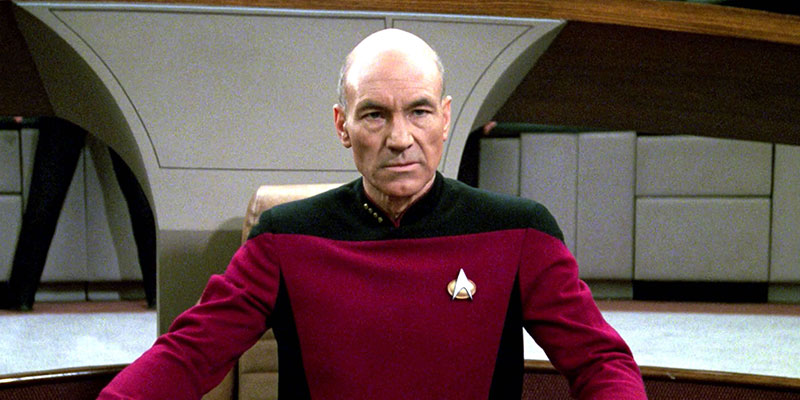
PICARD: THE DIPLOMAT
Jean-Luc Picard is many things to many folks, but I believe the word which may best describe him is Diplomat. In the face of many conflicts large and small, Picard sought the most peaceful resolution wherever possible, only resorting to violence when necessary and when all other options have been exhausted.
This might have best been illustrated by his time spent with Captain Dathon on El-Adrel IV in “Darmok;” both captains struggled against the elements and a significant language barrier to become friends and allies, preventing a potentially devastating battle from occurring in the sky above them (with possibly severe consequences for the Federation). Picard did this by actively choosing not to fight Dathon, instead of making sense of the Tamarian’s metaphorical language to understand the circumstances the two had found themselves in and working alongside Dathon to defeat the beast which threatened them. Although Dathon would not live to see it, the phrase “Picard and Dathon at El-Adrel” would come to define friendship through adversity for both races.
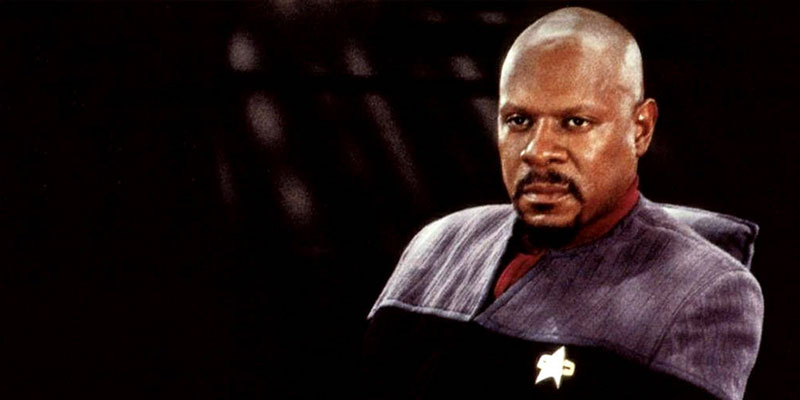
SISKO: THE SOLDIER
As a sort of the antithesis of Picard, Benjamin Sisko is the quintessential Soldier, and of all the captains he’s the one I’d ride with into Hell and back. Sisko joined Starfleet for many reasons, but a prominent one was a desire to serve the Federation and its people and interests to the best of his ability. In my experience, most folks who join the military do so, at least in part, because they want to serve their community in some fashion, and in this regard, Sisko is much like every soldier, sailor, Marine, and airman I’ve known. He has chosen a career path that requires him to be placed in harm’s way and to take up arms, if necessary, in the defense of his community, and his posting at Starbase Deep Space Nine did just that.
As an officer, Sisko was the essential commander, willing to do whatever was necessary for the safety of those under his command and under his protection, a duty he took very seriously. This was especially evident during the Dominion War, where he encouraged his crew aboard the U.S.S. Defiant to honour their ship with a retirement ceremony for spent phaser coils, among many other things (Such a thing reminded me of some of the ways we honoured old gear in the Navy). One came in the incredible episode “In the Pale Moonlight” wherein Sisko, faced with escalating allied losses in the war, conspires to bring the Romulan Empire into the war no matter the cost, in spite of their standing nonaggression pact with the Dominion. That cost would be very high, with Sisko determined to live with the blood of an otherwise innocent Romulan senator on his hands in exchange for the might of Romulan warbirds against the Jem’Hadar.
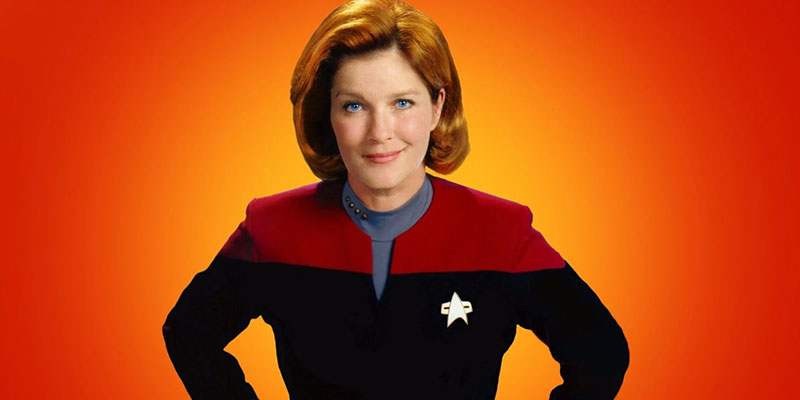
JANEWAY: THE PROTECTOR
Kathryn Janeway may have faced the most arduous mission of any Starfleet captain: get your ship and crew home safely after being stranded 70,000 light-years from home. During that journey, Janeway and the crew of the U.S.S. Voyager faced off against threats from the Kazon, Vidiians, Krenim, and Borg, among others, and as a testament to their grit and Janeway’s leadership, most of the crew did make it home after seven years in the Delta Quadrant.
I believe that a key element of Voyager’s survival was Captain Janeway’s overriding desire to protect the lives of the 150 people in her care. She could have chosen a path like Captain Rudy Ransom of the U.S.S. Equinox, allowing some crew to die so the rest could survive, but she was determined to protect everyone she encountered from harm and refused to sacrifice anyone, including the subspace aliens the Equinox had preyed upon, to get her ship and crew home. As such, Janeway could be described as an archetypal Protector.
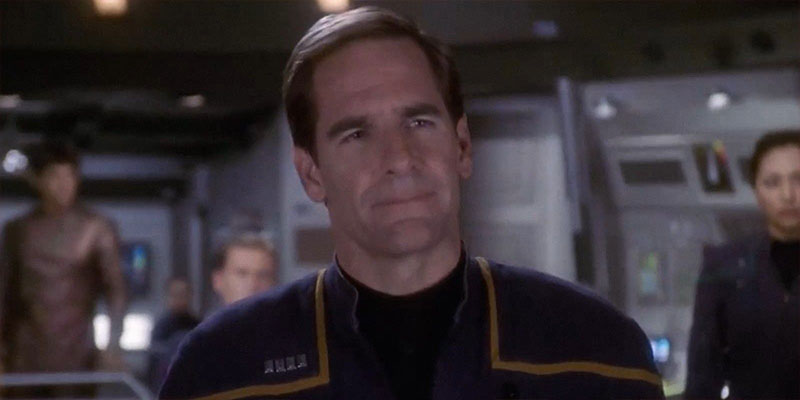
ARCHER: THE ORIGINAL
Using modern vernacular, Jonathan Archer is the “OG” starship captain in the Star Trek Universe. Even though the show Enterprise followed Voyager to air, Captain Archer himself predated Kirk, Picard, and the rest by a full century within the established chronology, and as such he is prototype for those who followed him. Archer walked where none had before, leading the NX-01 on humanity’s first mission of deep space exploration and making first contact with many notable races, including the Andorians, Tellarites, Xindi, and Klingons.
During his time in the centre seat, Archer displayed traits that would be essential to the characters who followed him, with a full range of capabilities vital to any captain’s success. He was revered as the greatest explorer of the 22nd century. His diplomatic acumen helped bring peace between the historically belligerent Vulcans and Andorians and established the framework of the United Federation of Planets. He fought against existential threats from both the Xindi and Romulans, ending both; in the case of the Xindi, he did so by proving their Guardians were nothing of the sort, using the Xindi for their own purposes in the Temporal Cold War. And he did his utmost to protect his crew, his world, and really anyone else he encountered, from any harm.
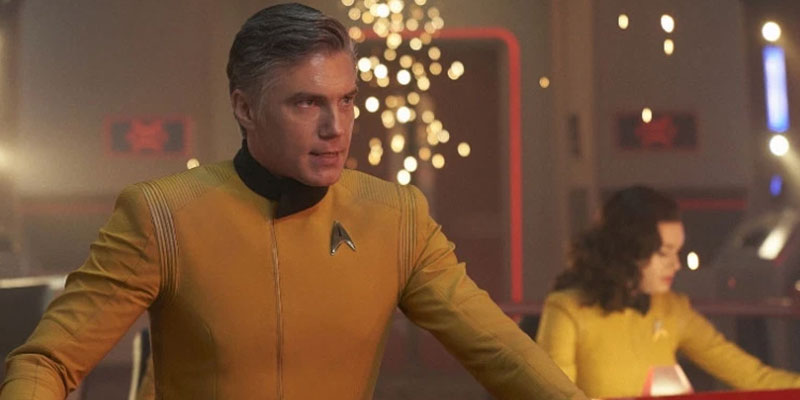
PIKE: THE PARAGON
I may be a little biased here. As much as I admire the other captains listed, I absolutely adore Christopher Pike, particularly the most recent iteration played by Anson Mount, and I feel that a lot of that adoration comes from Pike’s embodiment of the qualities of an all-round great leader. Pike is exactly the sort of person needed in charge of a deep space exploration mission; he is dedicated to the mission and to his crew, doing all within his power to safeguard that crew so that the mission gets done and everyone can go home. In the event someone does die under his command, he takes it very hard, as seen in “The Cage” where crew losses from a previous mission make Pike question whether he should even be a captain anymore.
Pike sees the best in everyone. Even with her somewhat sordid history, he saw Michael Burnham as an essential asset in resolving the Red Angel crisis. He had faith enough in Sylvia Tilly to continually encourage and support her as a developing officer. Even after some initial animosity with both Ash Tyler and ex-Emperor Georgiou, he found his way toward seeing beyond their past indiscretions and worked with them in resolving crises. And the knowledge of his ultimate fate never deterred him from doing his duty to his crew and the Federation; in a lesser person such knowledge would have rendered them incapable of performing basic tasks, but Pike never once faltered.
These factors not only make Captain Pike an ideal leader, but they establish him as a Paragon of Starfleet virtue, the shining example of the absolute best a Starfleet officer can be. It’s no wonder a medal of valour is named for him by the 24th century.

